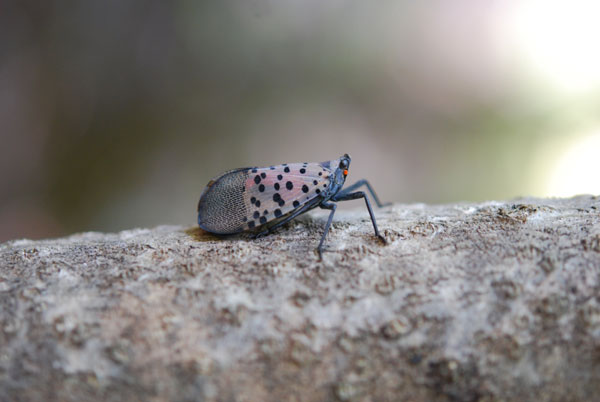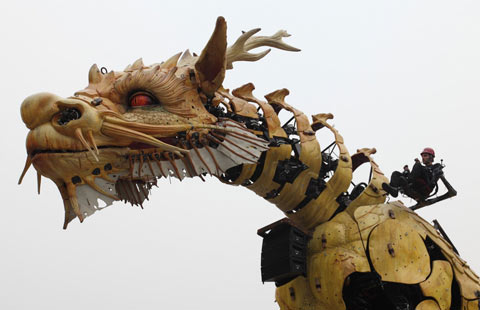Spotted lanternfly invades US
Updated: 2014-11-27 10:03
By JACK FREIFELDER in New York(China Daily USA)
|
|||||||||||
An invasive insect new to the United States that has the potential to impact the grape, fruit tree and the hardwood industries has been discovered in Pennsylvania. Now the race is on to educate the US population to help contain the menace, according to a pair of experts.
As far as scientists know, the spotted lanternfly is so far located in just one county in Pennsylvania, according to Gregory Parra, staff scientist with the US Department of Agriculture's (USDA) Center for Plant Health Science Technology (CPHST).
"The information gathering process is extremely preliminary right now," Parra told China Daily. "But we have to keep an eye on ways that this insect might be transported or moved unknowingly."
The spotted lanternfly, known formally as Lycorma delicatula, is native to a number of Asian countries, including China, India, Japan and Vietnam. Officials estimate that the lanternfly's presence could pose a threat to more than 50 species of trees in the US.
The bugs attack trees by feeding on sap and can cause further damage by excreting large amounts of fluid on tree surfaces that encourage the growth of mold. Mold can hinder plant growth and weaken trees to make them more susceptible to other pathogens.
Trees attacked by the Spotted Lanternfly will show a gray or black trail of sap down the trunk.
Pennsylvania is leading the effort right now to get people involved and there are plans for further outreach.
"There was also a technical working group formed for this insect, and people are in the process of identifying experts and reaching out to get more collaboration," Parra said.
Gregory Hoover, an entomologist at Penn State, said lines of communication need to be built up to inform residents of the impact this invasive species could have.
"We have a lot of folks that need to be trained with regard to what to look for," Hoover said. "Our 'search image' for detecting this insect has switched from predominantly adults to the overwintering mass of eggs."
"There are a lot more eyes among residents than there are among specialists, and what often occurs is homeowners are usually the pairs of eyes that see these things first," he said. "So there's a real need to educate all of those individuals."
On Nov 1, Pennsylvania state officials announced a quarantine to contain the presence of the species in the Pike and District townships of Berks County, Pennsylvania (northwest of Philadelphia). The first presence of the bug in the US was confirmed in September.
Pennsylvania Agriculture Secretary George Greig said in a Nov 3 statement: "Berks County is the front line in the war against the spotted lanternfly."
"Since this is new to the country we are taking every precaution and measure possible to learn more, educate the public and eliminate this threat to agriculture," Greig said. "We need to do everything we can to stop the spread. We're asking a lot, but we know Pennsylvanians will assists us and help save our fruit trees, grapes and forests."
Parra said the spotted lanternfly is not much of a strong flier, so the main concern and risk is associated with "human-assisted movement".
jackfreifelder@chinadailyusa.com
Today's Top News
Nation mulls end of death penalty for some crimes
Men spending more on facial care
Graft fight dents overseas spending
Interracial relationships from the past
Sanctions, falling oil price cost Russia $140b yearly
Ukraine to hold referendum on joining NATO
UN calls for more sex ed in country
PBOC surprise powers equities
Hot Topics
Lunar probe , China growth forecasts, Emission rules get tougher, China seen through 'colored lens', International board,
Editor's Picks

|

|

|

|

|

|






